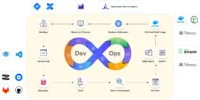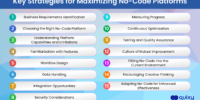Welcome to the realm of Continuous Integration (CI) and Continuous Deployment (CD), where the pulse of software development beats in harmony with swift and efficient workflows. In this article, we’ll explore quick tips for implementing a robust CI/CD pipeline, ensuring the seamless integration of code changes and rapid deployment of applications. ️
The Need for Speed: Unleashing the Power of CI/CD in Software Development ️
In the fast-paced world of software development, the need for speed and efficiency is paramount. Before we delve into the tips, let’s understand the significance of CI/CD in fostering collaboration, automating processes, and delivering high-quality software at an accelerated pace. ⏩
Quick Tips for CI/CD Implementation
5. Automate Testing Processes: Kickstart your CI/CD journey by automating testing processes. Integrate automated unit tests, integration tests, and end-to-end tests into your pipeline. This ensures that code changes are thoroughly tested before being merged, reducing the likelihood of bugs and regressions.
4. Version Control System Integration: Infuse your CI/CD pipeline with the strength of version control system integration. Connect your pipeline to a version control system (e.g., Git) to automatically trigger builds and deployments when changes are pushed to the repository. This ensures that every code change goes through the CI/CD pipeline.
3. Parallelize and Distribute Builds: Empower your CI/CD pipeline with the agility of parallelized and distributed builds. Divide the build process into smaller, parallelizable tasks, distributing them across multiple agents or containers. This accelerates the build time and allows for concurrent processing of tasks. ⚙️
2. Containerization for Consistency: Fortify your CI/CD pipeline with the consistency of containerization. Use container technologies like Docker to encapsulate applications and their dependencies. This ensures consistency across different environments, reducing the “it works on my machine” phenomenon and streamlining deployment.
1. Continuous Monitoring and Feedback: The heartbeat of a successful CI/CD pipeline lies in continuous monitoring and feedback. Implement monitoring tools to track the performance of your pipeline. Provide developers with timely feedback on build and deployment statuses, enabling them to address issues promptly.
The Inverted Pyramid Approach: Ascending to CI/CD Excellence ️
Ascending to CI/CD excellence follows the inverted pyramid approach. Start by implementing continuous monitoring and feedback, containerizing for consistency, parallelizing and distributing builds, integrating with version control systems, and automating testing processes. The journey to a swift and efficient CI/CD pipeline is a step-by-step ascent to accelerating development with precision and speed. ⏩
Swift and Efficient Development: Mastering the Art of CI/CD Implementation! ️
In conclusion, CI/CD implementation is the art of mastering swift and efficient development. By incorporating these quick tips, you’re not just building a pipeline; you’re mastering the art of accelerating development with precision, collaboration, and automation. May your CI/CD journey be marked by speed, efficiency, and a continuous flow of high-quality software!








